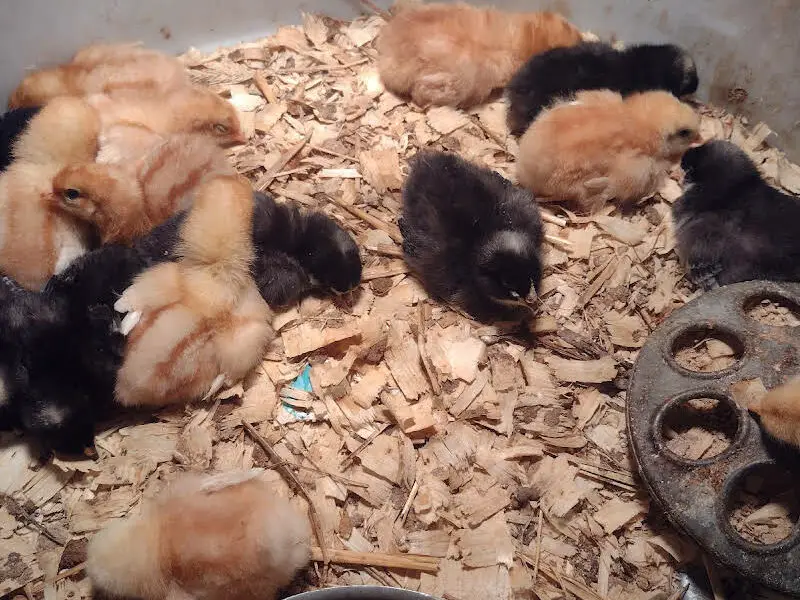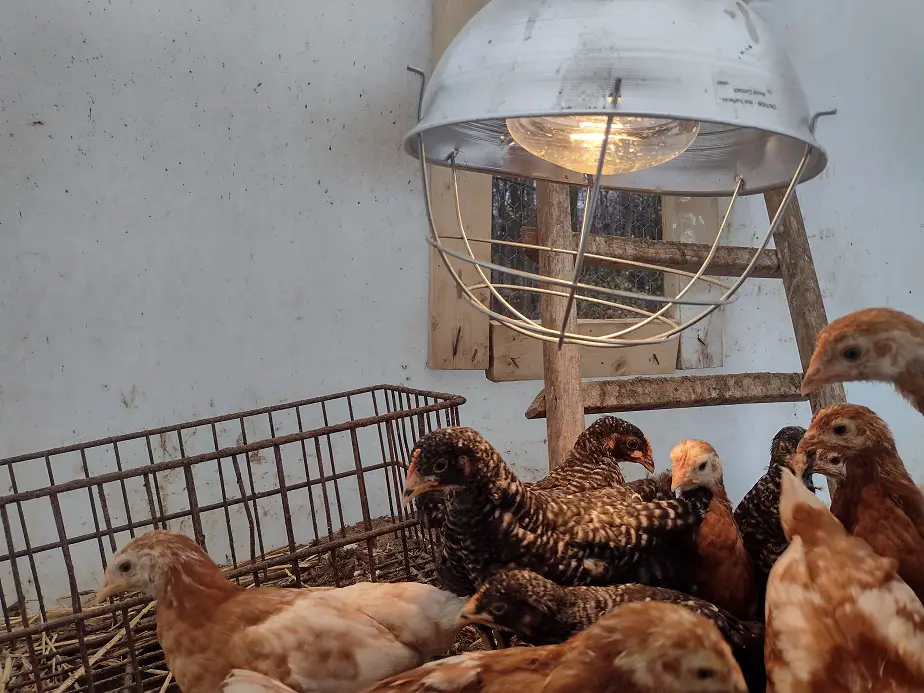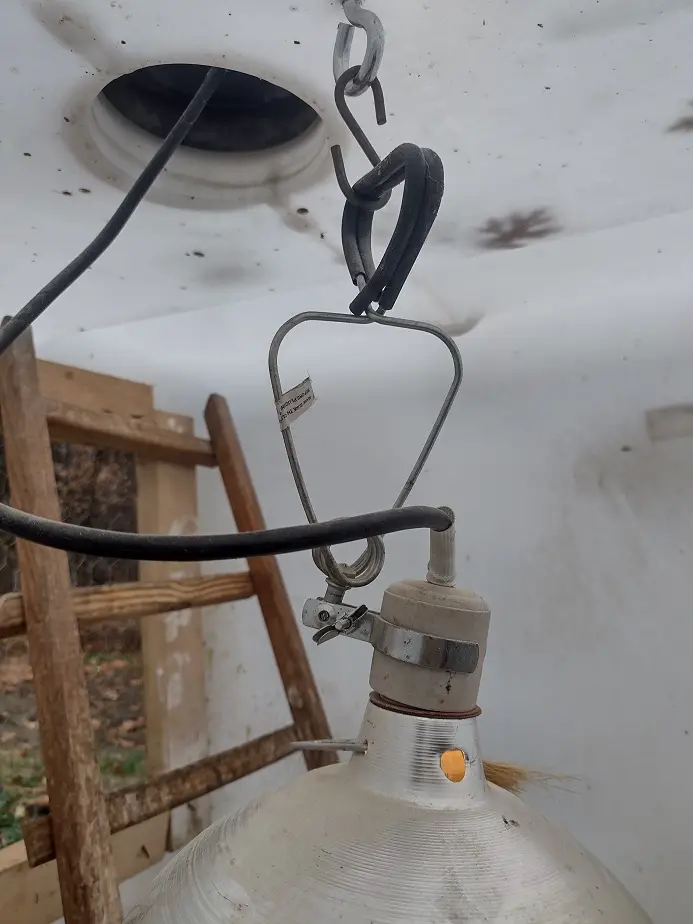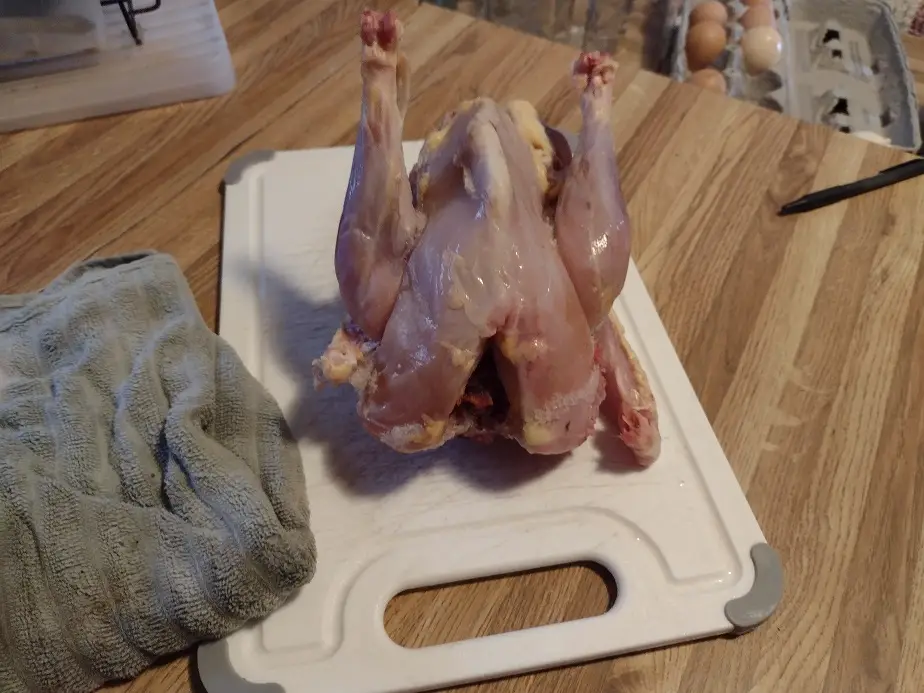Chicken is a prize around here because we don’t often butcher our laying hens, but every now and then we raise a flock of meat birds.
Hybrid Cornish Cross meat chickens are butchered at 6-8 weeks in commercial facilities and 10-12 weeks on most homesteads. Freedom Ranger Hybrids are usually butchered at 12-14 weeks due to their slower growth. Heritage meat breeds, like the barred rock, were traditionally butchered at 16-20 weeks.
Depending on the breed there are varying growths, very different caging requirements, and a huge difference in meat color and flavor. Here’s what you need to know about raising chickens for meat.
An Overview of Raising Meat Chickens
The standard meat chicken is the cornish cross. It’s classified as a broiler-type chicken. Meaning, it gets big at an early age. These birds are expected to eat 13 to 15 pounds of feed by 7 weeks old. Older birds are bigger but less efficient with feed. It’s recommended to free-feed them for 12 hours a day.
The break from being offered food helps them adequately digest what they ate. Cornish cross chickens are somewhat prone to sickness. Keeping them in fresh air and sunshine helps that a lot. After the chick stage, The birds should have about 3 square feet each of cage space.
Overcrowding encourages harmful behaviors and concentrates both the mess and the chance of illnesses. Commercial chicken farms start all birds on a medicated feed containing an assortment of antibiotics, but I don’t recommend that and find it unnecessary when raised in a clean, wholesome environment.
If butchered by 8 weeks, Most farmers feed a starter of starter/grower feed straight through beginning to end. It’s usually 18 or 20 percent protein. If you do want the medicated feed, you can only use it in the first week due to side effects of eating the meat with antibiotics still in it.
Butchering chickens requires no special equipment, especially if doing small numbers. All I use is a sharp knife, a bucket to hold the refuse, and an outdoor tabletop. You can scald and pluck chickens, but it’s very time-consuming. Skinning them is quite fast and may be a better idea.
Chickens can be housed on the ground. Wire floor cages tend to cause foot problems in meat birds. Cornish cross chickens will be butcher size within two months, but are still young and don’t have a very good feather structure until 8 weeks old. They need to be sheltered from the cold and from bad weather.
They can usually handle direct sun, but should have some shade to get under if it gets hot out. Keep the cages clean, and water full at all times.

Buying and Caring for Meat Chicks
I suppose I have butchered 150 chickens in the past several years, and at least 5 different breeds. We do butcher a lot of old hens, but every now and then we buy and raise up a batch of birds specifically for meat. It can be a pretty simple ordeal.
You can buy newly hatched chicks from most farm supply stores in the spring, and from a hatchery any time as long as it’s not too cold. Most hatcheries won’t ship chicks in frigid temperatures. Expect to pay between 2 and 4 dollars each, depending on the breed and quantity ordered.

Before you purchase any chicks, you need to have a setup for them. Chicks are usually shipped day-old and don’t have enough feather growth to keep warm well, so they need some extra heat. Create an artificial brooding environment, or brooder, with a heat lamp and a basket, bin, or box.
I recently used the bottom half of a 55-gallon barrel as a brooder with a heat lamp to keep them warm, and woodshavings in the bottom to soak up manure and spilled water. you need something to keep the ground dry. It’s very important to keep things very dry for the first two weeks.
Make sure the birds aren’t too hot or too cold. Cold chicks will be huddled up together trying to keep warm, and hot chicks will be laying down, trying to avoid the hotter areas. I recommend placing a thermometer on the brooder floor.
Adjust the temperature by raising or lowering the heat lamp. I like to keep the floor temperature between 80 and 90 degrees. That seems t do pretty well. If the chicks are huddling together for warmth, lower the light a few inches and see how that goes.

Heat lamps have a spring-grip bracket to attach to things, but it doesn’t hold on to everything very well. I prefer to hang the lamp with a rope or cable. It’s more secure, and it’s easier to adjust that way.
Besides needing some form of containment and heat, you’ll need something to hold the feed and water. Young chicks are prone to hopping in their water. Having a regular water bowl can cause them to drown, or get wet and cold. Wet chicks die easily.
I highly suggest a chick-watering dish. They hold a lot of water, but won’t allow the chicks to hop in for a swim. A simple feed dish with some type of hopper on top would be very helpful. I like the ones that a mason jar screws onto.
They do make a plastic jar that goes on them, but a glass mason-style jar works too. Sometimes you have to adjust the tightness to keep water from leaking, and you must keep that sort of waterer on level ground.
As far as which feed to use, any brand will do. I buy the cheapest non-medicated starter or starter/grower feed I can find. Feeding things like cracked corn or scratch grains will give you less growth, especially because of the low protein content. This is most pronounced with the cornish cross birds.
How Much Do Meat Chickens Eat?
The average cornish cross meat chicken eats 12 pounds of feed by 6 weeks, 15 pounds of feed by 7 weeks, and 20 pounds by 8 weeks. 500 pounds will feed about 40 birds to 6 weeks. 200 pounds will feed 15 birds, and 150 pounds is enough for 10 or 12 birds.
Cold weather will cause your birds to need a little more feed. Stress will reduce the growth of your meat birds, even if they are eating well. Things like thunderstorms, dogs barking, or running out of water will cause extra stress that can have a visible reduction in the yield of meat.
Other breeds besides the cornish cross will use a similar amount of feed, but not so much at once. They eat less per day but are butchered by about 18 weeks the age to reach a usable table size.
Cost of Raising Meat Chickens
Meat chickens cost $4 to $7 each to raise to butcher age. The standard cost per pound to produce home-raised chicken is $2/lb. That includes buying the chicks and feeding them for 6-8 weeks. Some people feed other feed items to reduce the bill, but have to raise the birds longer to get the same weight.
Meat chicken pens can be as simple as a chain-link kennel or a homemade pen with 2x4s and chicken wire. The cost of a pen is directly correlated with how nice you want it to look, and how creative you are with the materials at hand. I suggest keeping things as cheap and practical as possible.
How Many Chickens Should I Raise for Meat?
You Should plan on raising 12 or 13 chickens for every 50 pounds of meat you want to end up with. That will take about 6 cubic feet of freezer space. Standard meat chickens have an average carcass weight of 4 pounds when butchered at 6 weeks, so divide the pounds of meat you want by 4 and you’ll see how many you should raise.
A lot of backyard chicken raisers let them go to 10 weeks for an average of 6 pounds per carcass.
Best Breed of Meat Chicken
The best meat chicken breed is the cornish cross if you don’t want to hatch your own. If you would prefer to have chickens that reproduce on their own, barred rocks are the most popular of traditional meat, or dual-purpose, chicken breeds.
Any chicken can be a meat chicken, but only hybrid chickens will grow super fast. Other breeds will have to be raised longer and will butcher out skinnier. But, many people, me included, think the traditional slower-growing chickens taste far better.
Related Articles:

